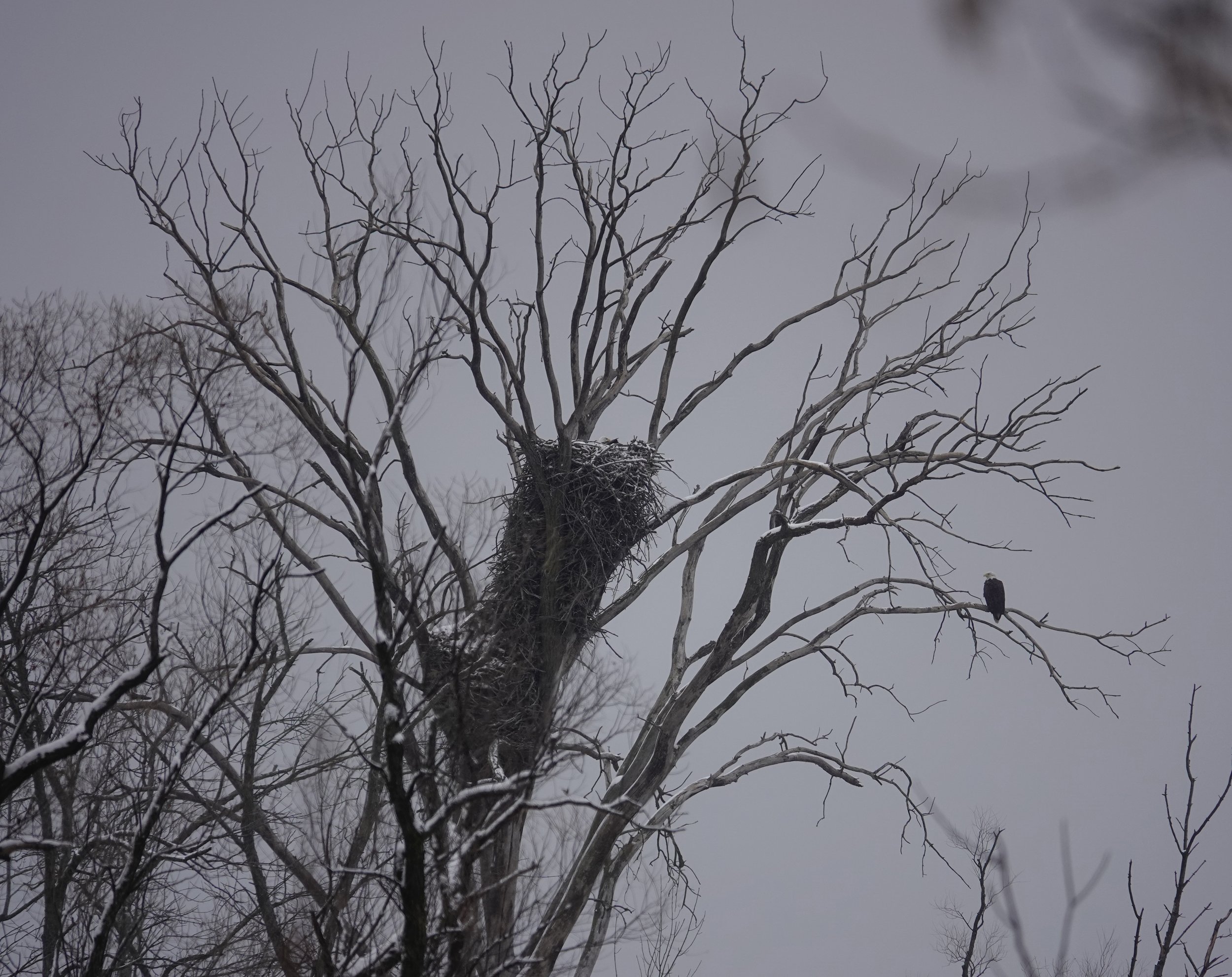Naturally
Owls are like stars. They come out at night. A great horned owl flew in front of my car in the late night. Owls find roads to be prime hunting locations. An owl-car collision was avoided.
Winter went into hiding and May came early this year, then came the end of March with its snow and cold. I was stationed at the edge of a lake, an intersection with nature, ready and willing to be astounded by all I might experience. Canada geese flew in for a water landing. I think of geese as accomplished fliers, but I don’t think of them as fancy aerialists. They aren’t designed for fancy feats of flying. Some geese coming to the water used a tricky technique to slow themselves for a safe and effective landing. The geese stopped flapping their wings and rolled their bodies upside down while twisting their long necks so that they remained right side up. Then, they rotated their bodies to right themselves just in time for a gentle splashdown. If they had been passenger geese, the travelers aboard would have applauded the landing. The maneuver the geese performed is called whiffling. Slowing their descent is what I think the big birds wearing goose down were doing, but they might have been just showing off. Either way, it was impressive. If I had Superman’s hearing, I could have heard one goose say, “Take that, peregrine falcons.”
Turkey vultures monitored the roads no matter where I drove. To them, each road is an aisle in the grocery store. Road-killed deer, raccoons and opossums were available for their dining pleasure.
I listened to a tufted titmouse calling “Peter-Peter-Peter” in Lamoni, Iowa. That’s what the mnemonic is. It could have been producing a clear whistle that said pita-pita-pita, cheeva-cheeva-cheeva, or here-here-here. The plural is titmice, and that name has nothing to do with mice. It derives from Old English words meaning “small bird.” The collective noun for titmice is a banditry. One titmouse flew near me, its big, dark eyes giving it the look of something that is constantly surprised. It used its feet as a plate to hold a seed and its beak as silverware to open and eat the food.
I strolled around the St. Joseph, Missouri, area and had lovely looks at a northern mockingbird, Carolina wren, eastern meadowlark and great-tailed grackle.
I watched trumpeter swans watching tilers working in a field in Minnesota. This swan can be nearly 6 feet long with a 7-foot wingspan and weigh over 25 pounds. That’s no Sesame Street’s Big Bird, but it’s a big bird. When the swans flew, the wind was so strong it was as if they were flying in place.
Q&A
“If crows are so smart, how come I can’t understand what they’re saying?” It’s because they are so smart.
“How is it decided if ‘Lake’ goes before the name or after it?” Lakes with more surface area are more likely to be called something with “Lake” first. The size of a lake has something to do with whether “Lake” goes first or second in a name. Every Great Lake has “Lake” first, as do many of the country’s biggest or most prominent lakes. The way lakes were named was influenced by settlement patterns and the languages of those who colonized an area. There are some area differences in whether it was more common to put “Lake” first or second.
“Are ticks insects?” They are actually arachnids, which are the same group as spiders, mites and scorpions. How can you tell them apart? The best way to tell arachnids from insects is the number of legs. Arachnids have eight legs, whereas insects have only six. Insects have three segments: head, thorax and abdomen. Arachnids have only two segments: cephalothorax and abdomen.
“What bird could fly higher than Mt. Everest?” The chickadee could do so easily. Mt. Everest can’t fly. The bar-headed goose has been recorded at heights of over 23,000 feet and mountaineers have reported seeing the geese flying over Mount Everest.
“Why does a tree have so many branches?” It’s because they stick together. Branches help to transport water, sugar and nutrients to the leaves and canopy of the tree.
“What kind of haircut does a bee get?” A buzz cut.
Thanks for stopping by
“Biographical history, as taught in our public schools, is still largely a history of boneheads: ridiculous kings and queens, paranoid political leaders, compulsive voyagers, ignorant generals, the flotsam and jetsam of historical currents. The men who radically altered history, the great creative scientists and mathematicians, are seldom mentioned if at all.”—Martin Gardner.
“The earth has its music for those who will listen; Its bright variations forever abound. With all of the wonders that God has bequeathed us, There’s nothing that thrills like the magic of sound.”—Reginald Holmes.
Do good.
©️Al Batt 2024
The largest bald eagle nest on record was in Florida and was 10 feet in diameter and 20 feet tall. A nest in Ohio, shaped like a wine glass, weighed over 2 tons, and served its purpose for 34 years until the tree blew down. The nest shown here is at Trempealeau National Wildlife Refuge near Trempealeau, Wisconsin. A bald eagle, one of the owners of the nest, is visible to the right of the nest. What a fine sight to see. Photo by Al Batt.

